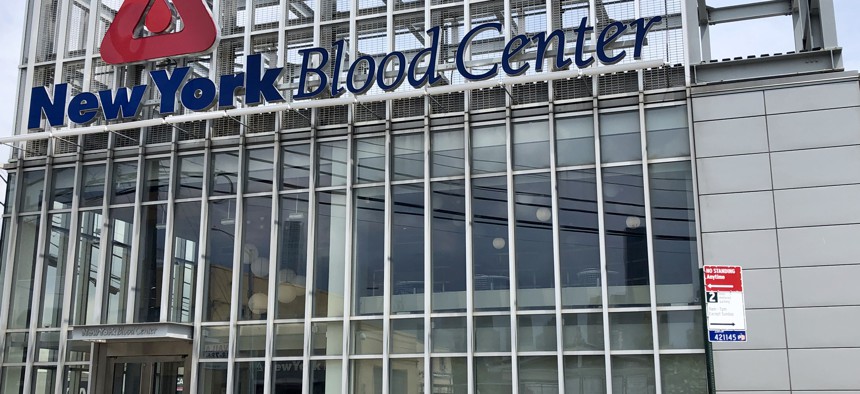Nonprofits
New York Blood Center welcomes newly eligible LGBTQ+ donors
The move comes after the Food and Drug Administration issued its final guidance on a screening process that is not based on sexual or gender identity.

The New York Blood Center in Long Island City, Queens (Photo by: Lindsey Nicholson/UCG/Universal Images Group via Getty Images)
The New York Blood Center will be implementing a new donor screening process which focuses on individual donor assessment, allowing the organization to welcome new blood donors, including those from the LGBTQ+ community. This comes as the Food and Drug Administration issued its final guidance, which establishes a blood donor screening process that is not based on sexual or gender identity.
“We absolutely applaud the FDA final guidance that was released earlier this summer,” said Chelsey Smith, director of public relations at the New York Blood Center.
“This is something that we have strongly advocated for for years, along with the rest of the blood industry, scientifically based changes to the policies that impacted men who have sex with men are no longer in place. So moving forward, we're adopting an individual donor assessment that does not take into account sexual or gender identity, it applies to all donors, which, in effect is hopefully going to broaden our donor pool and allow members of the LGBTQIA+ community who couldn't donate before to now donate.”
Historically, the FDA instituted a lifetime deferral for blood donations from gay and bisexual men to reduce the spread of HIV in blood supply during a time when testing was very limited. However, in 2015, the FDA revised this policy and created a 12 month deferral for men who have sex with men as comprehensive testing and capabilities increased and showed the safety in a shortened deferral period. The policy was revised once again in 2020 to its current policy, which is a 3 month deferral.
This announcement comes during a blood emergency, after a summer of low donor turnout. The Labor Day holiday, back-to-school activities and a 50% decrease in youth and first-time donors have contributed to the blood shortage, which means blood supply is currently no longer sustainable for hospitals in the area. Specifically, types O+, O-, B- and platelets are critically low.
“We're very hopeful that it's going to broaden the donor pool for our entire country. This blood emergency doesn't just impact the tri state area, it impacts the entire country as well. So we're hopeful that these changes are going to result in more donors being eligible to donate, and could even encourage others to donate who may not have ever considered it in the first place.” said Smith.
